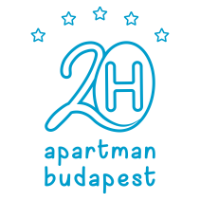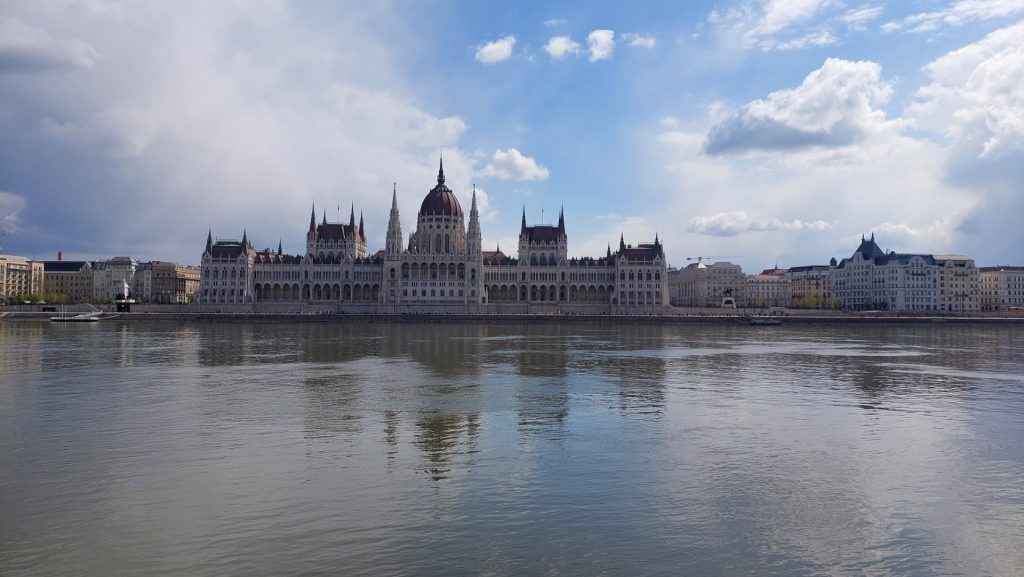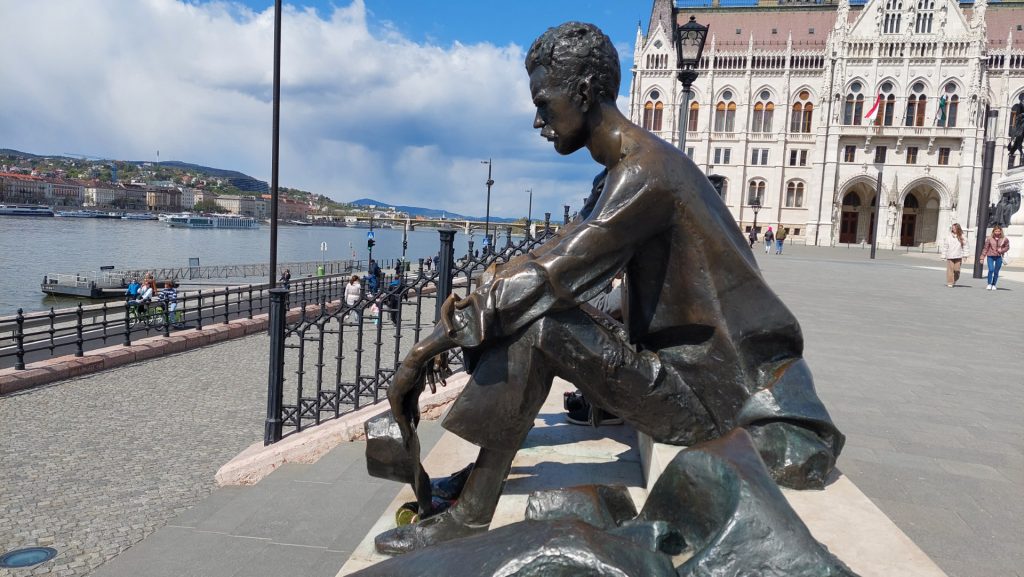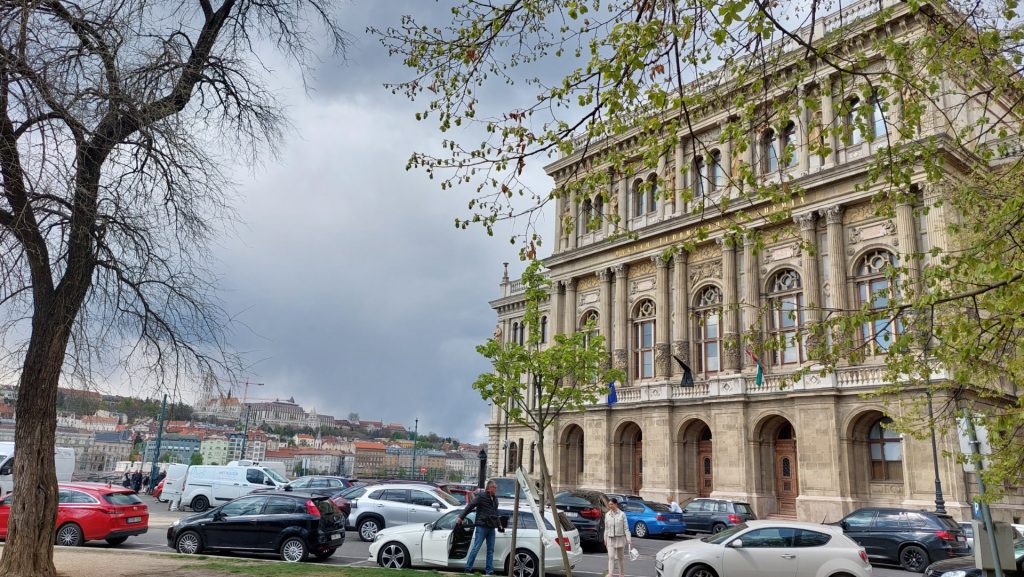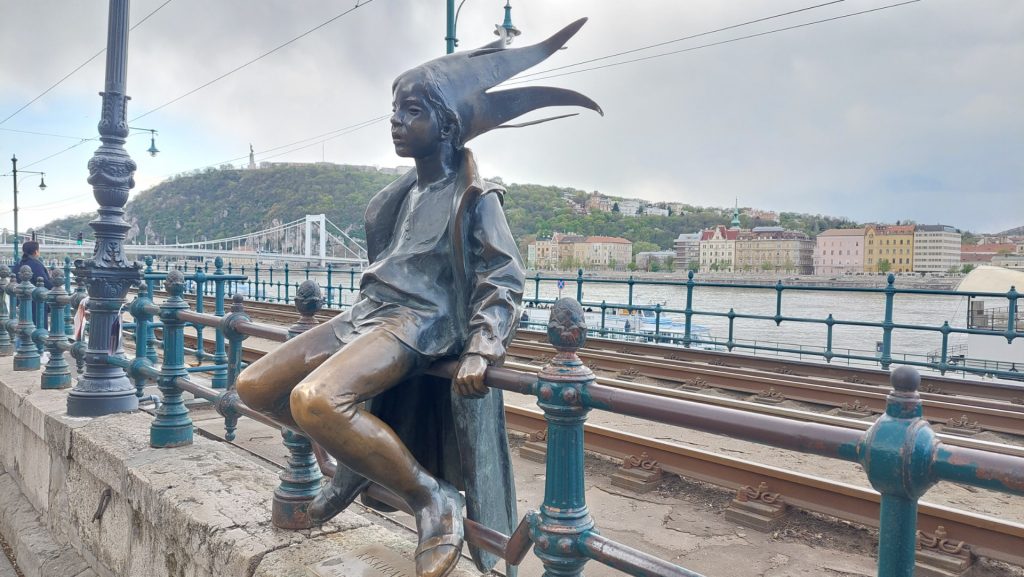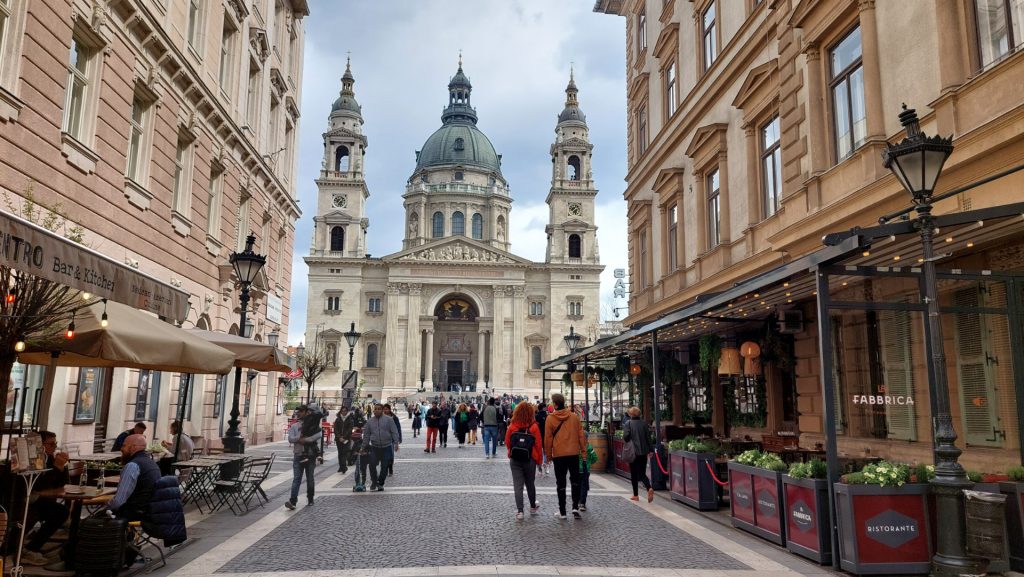The Hungarian Parliament & Its Surroundings
I recommend that you undertake this tour on foot, as you will be surrounded by stunning architecture til the very end. If, by chance, you tire out, you can always hop on the tram #2 for a stop or two, as this takes you from Jászai Mari tér along the bank of the River Danube. You can also hop on a bike or electric scooter! Just be sure to watch out for the numerous statues which dot the streets along the way!
Begin by walking out to Szent István körút, the main road, then cross to the other side. Here, we meet our first statue of the day, Lieutenant Columbo. Who wouldn’t recognize the detective of legend, the one who never failed to crack a case in his iconic overcoat? Columbo stands at the beginning of Falk Miksa utca, as supposedly Peter Falk, the actor who portrayed the detective, is a descendant of Miksa Falk, the politician, scholar, and writer for whom the street is named; this could, however, just be an urban legend. In my opinion, the statue is not a grand success, but Columbo’s dog is adorable. 🙂
Closer to the Danube at Jászai Mari Square, we find another statue, more successful in my opinion, this one of Imre Nagy, the leader of the 1956 Uprising and, for a brief time, Prime Minister. Strolling along Balassi Bálint út, we arrive to the Parliament with its breathtaking, legendary neo-Gothic architecture.
Hungary’s Parliament is among the most beautiful in the world and was designated as a World Heritage Site in 2011 due to its extraordinary architectural and cultural value; it provides a home to the Hungarian Legislature and the Holy Crown. Constructed at the end of the 19th century, based on the design of Imre Steindl, the Parliament may be visited daily from 8:00 – 16:00, groups leave from the Visitors’ Center.
Adjacent to the Parliament sits Attila József, one of Hungary’s most famed poets. I am particularly fond of his poetry, so perhaps this is why this statue is among my most favorite in the city. As to why he’s sitting on the Banks of the Danube?
I sat, and watched a melon-rind float by.
I hardly heard, wrapped in my destined ends,
To surface chat the silent depth reply.
As if it flowed from my own heart in spate,
Wise was the Danube, turbulent and great.
Continuing along the Danube, we arrive to the city’s most shocking memorial: abandoned shoes along the riverbank. This instillation serves as a memorial to the innocent Hungarian Jews shot into the Danube by members of Arrow Cross party in 1944-45. It was designed jointly by the filmmaker Can Togay and sculptor Gyula Pauer.
After about 400 meters, you will arrive to Széchenyi István Square, to the building of the Magyar Tudományos Akadémia (Hungarian Academy of Sciences). The Academy was founded during the 1825-1827 sessions of Parliament, which was still holding session in the former capital of Hungary, Bratislava. Count István Széchenyi (1791-1860) offered one year’s income for the founding of a Hungarian scientific society; he later collected donations toward the construction of a building to house the institute (1858).
Construction began according to the plans of Freidrich August Stüler after a long period of debate concerning the architectural style of the building. It is possible to visit the gallery of the MTA by prior reservation, with tours available in both English and German. Aside from the gallery, it may be possible to visit the upstairs event rooms assuming they are not in use.
After visiting the MTA, continue on toward the first permanent bridge of Budapest, the Chain Bridge! Although the Elizabeth Bridge remains my favorite with its refined, elegant structure, the Chain Bridge remains the most well-known, indeed iconic symbol of the capital. Similar to the Academy, this bridge was first proposed by Count Széchenyi. It is currently under reconstruction, so sadly, it is not possible to cross the Danube here by foot.
The pedestrianized area to which you are now arriving (the area between the Chain Bridge and the Elizabeth Bridge) is referred to by locals as the “Corso” and is beloved by both tourists and locals alike. Boarded by five-star hotels, visitors are tempted by countless restaurants, cafés, and terraces. While it’s true, the prices here are not the lowest, the breataking view over the Danube to the Buda side (from the Gellért Hill, Citadella, Fisherman’s Bastion, and Castle District) more than compensates. If you are visiting Budapest in August, there is perhaps no better area from which to enjoy the fireworks of August 20th. Here, too, many fine artistic instillations call out for a selfie: a statue of Ignác Roskovics, legendary painter, a statue of the “Little Princess” sitting on the railing, and the statue of a girl with her dog at the Vidagó Square.
This brings us to one of the most beautiful buildings of Budapest, the Vigadó, which offers a home to countless high-quality artistic and cultural performances. Individual guided tours of the space itself are available upon request (and recommended!), advanced notice is required.
Continue left down Deák Ferenc utca until you reach the legendary Vörösmarty Square. At Christmastime, the entire square is filled with a gigantic and popular Christmas market. If you are starting to tire, stop by the legendary Gerbeaud pastry shop, founded in 1858, and enjoy some truly spectacular tradtional Hungarian pastries.
After a brief rest, continue strolling amid the hustle and bustle of Budapest’s High Street, Váci Street. Or feel free to continue up Deák Ferenc Street until you reach Bécsi Street, where, after turning left, you will find yourself at one of the most popular meeting places for Budapest youth, the Erzsébet Square.
Upon crossing the square, continue down Sas utca, which will bring you to Szent István Square, home to the Budapest’s legendary Basilica. At Christmastime, this large area is home to one of Europe’s most popular and beautiful Christmas markets. In the Basilica itself, you can view the “Holy Right” (the embalmed, mummified right hand of the founder of the State of Hungary, the first Hungarian king, King St. Stephen), the Treasury, and enjoy stunning, panoramic views from the top of the Basilica’s tower.
You can easily walk back to Hollán Ernõ Street from here by heading down Bajcsy Zsiliinszky Rd back toward the Nyugati train station. It’s worth stopping to wonder at the grandeur of the station itself, opened in 1877 and constructed by none other than Gustave Eiffel. Its iron structure was a landmark in its day, and the station is home to perhaps the most beautiful, upscale McDonalds in the world.
To return to the apartment from here, you can take tram 4/6 one stop back to Jászi Square or simply walk up the main road (Szent István körút).
